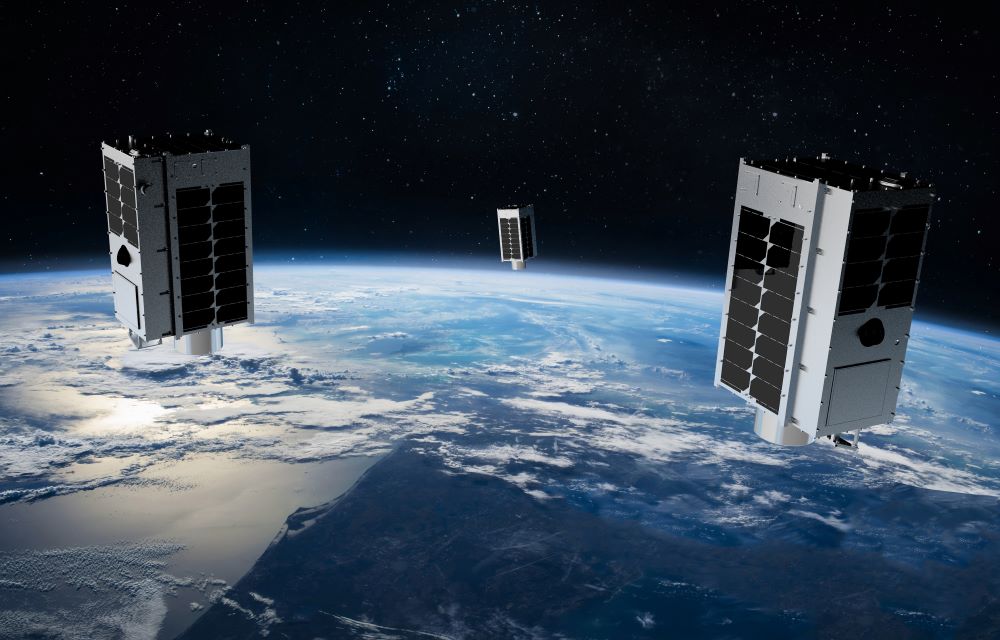Now Reading: AST SpaceMobile sheds more light on sovereign direct-to-device plan for Europe
-
01
AST SpaceMobile sheds more light on sovereign direct-to-device plan for Europe
AST SpaceMobile sheds more light on sovereign direct-to-device plan for Europe


TAMPA, Fla. — AST SpaceMobile has registered plans with international regulators via Germany for a sovereign, space-based network that would provide broadband directly to devices across Europe, the U.S.-based satellite operator said Nov. 7.
The network would be operated by Luxembourg-based SatCo, a joint venture AST announced in March with European telecoms giant Vodafone.
Vodafone, one of AST’s investors, has already agreed to provide cellular spectrum that would enable the low Earth orbit (LEO) constellation developer to launch services in 10 countries, pending regulatory approval.
SatCo is seeking to provide a pan-European service with 2 gigahertz S-band spectrum that’s due for renewal in the region in 2027, alongside 700 megahertz public protection and disaster relief (PPDR) frequencies.
Viasat is currently using S-band for its hybrid satellite-cellular European Aviation Network, while EchoStar plans to sell off its global Mobile Satellite Services spectrum to bolster SpaceX’s Starlink direct-to-device (D2D) offering.
“SatCo delivers a sovereign satellite solution to the whole of Europe,” Vodafone CEO Margherita Della Valle said in a statement, as Starlink and other D2D providers currently only leveraging cellular partnerships must expand on a country-by-country basis.
According to AST, 21 European Union member states and other European countries have expressed interest in adopting the service, which is slated to become commercially available next year as the company ramps up satellite deployments.
SatCo also announced plans to establish its main satellite operations center in Germany, near Munich or Hannover, depending on final negotiations. The center would host one of the ground gateways needed to extend coverage across Europe.
According to the companies, the constellation will have a “command switch” enabling European oversight of security and network operations.
The system would update telemetry, tracking and control encryption keys for S-band smartphone connections and Q/V-band satellite-to-ground links, as well as manage service-level encryption along with the activation and direction of satellite beams across Europe.
Announcing the joint venture earlier this year, AST said the expansion will be supported by 5,600 square meters of newly opened manufacturing and office space in Barcelona, Spain, but did not provide an update on satellite plans in the Nov. 7 announcement.
The venture has so far deployed five operational BlueBird satellites, built at its Texas facilities, though 45 to 60 are needed to provide continuous coverage across anchor markets.
A sixth BlueBird, shipped to India last month for launch, is part of a new breed spanning 223 square meters once deployed, more than three times the size of the previous generation.
AST has plans to deploy up to 60 satellites by the end of 2026, though its schedule will largely depend on the availability of Blue Origin’s delayed New Glenn launcher.
Stay Informed With the Latest & Most Important News
Previous Post
Next Post
-
 012024 in Review: Highlights from NASA in Silicon Valley
012024 in Review: Highlights from NASA in Silicon Valley -
 02Panasonic Leica Summilux DG 15mm f/1.7 ASPH review
02Panasonic Leica Summilux DG 15mm f/1.7 ASPH review -
 03How New NASA, India Earth Satellite NISAR Will See Earth
03How New NASA, India Earth Satellite NISAR Will See Earth -
 04And Thus Begins A New Year For Life On Earth
04And Thus Begins A New Year For Life On Earth -
 05Astronomy Activation Ambassadors: A New Era
05Astronomy Activation Ambassadors: A New Era -
06SpaceX launch surge helps set new global launch record in 2024
-
 07Space Force plans new ‘Futures Command’ amid pressure to speed up modernization
07Space Force plans new ‘Futures Command’ amid pressure to speed up modernization




















